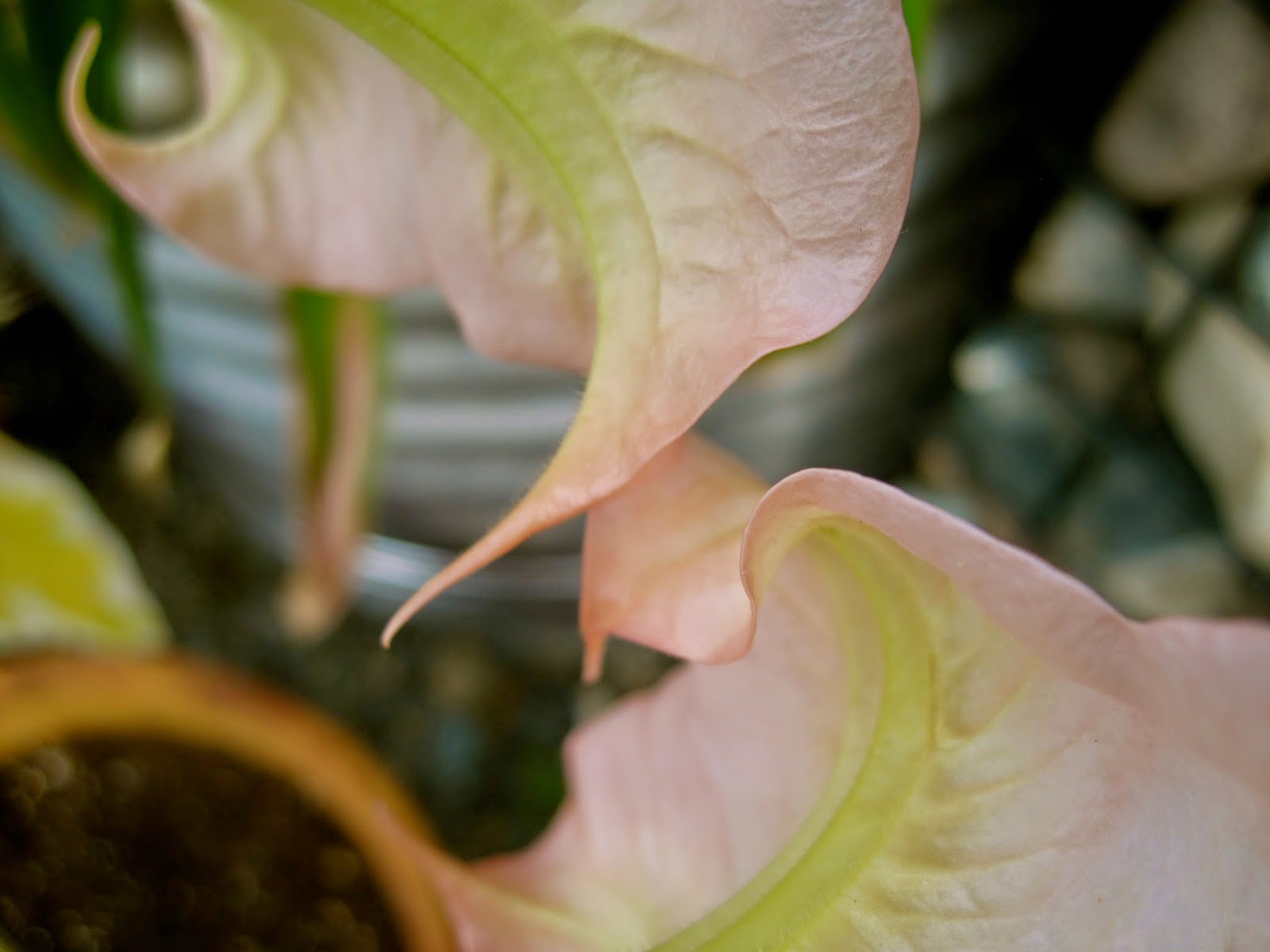 |
| Here is the Bottle Tree Bed on May 30 in late afternoon sun. |
I haven't made many changes to the Bottle Tree Bed, but I have made a few. They're not very noticeable, however. I moved some species tulips into the bed from a couple of other spots in the front garden, where they had gotten buried under several inches of soil when the front garden was redone back in December. They had to push up very, very long flower stalks through all that extra soil, and then flopped over when I dug them to be moved. And of course, once they were moved, they almost immediately withered. So I'm hoping that next spring they will re-emerge on shorter, sturdier stalks.
Everything else is getting taller, and the Verbascum, which were dug and divided earlier this year, are flowering this month, and are almost finished in fact.
 |
| Most of the Verbascum phaeum, which I grew from seed several years ago, are this purple color, although a couple are very light pink. |
 |
| There is one Verbascum 'Southern Charm' which I bought a couple of years ago |
 |
| Also flowering in the bed is this hardy Geranium, which I don't know the name of. I dug and divided it earlier this year, so now I have three or four clumps of it in the bed. |
 |
| Elderberry 'Black Beauty' is flowering |
The enormous Ceanothus thyrsiflorus, one of the very few shrubs planted by the previous owners that is still growing in the garden, is flowering right now. It has a lovely scent, and if you get close to it you can actually hear it humming, the bees love it so much.
 |
| Ceanothus at the base of the Douglas firs in the Bottle Tree Bed |
One of my favorite native shrubs, Lonicera involucrata, also called twinberry honeysuckle, is flowering and berrying up in the bed. The flowers and berries come in pairs. Although the flowers are yellow, not red, hummingbirds adore them.
 |
| Twinberry pairs of flowers, which hide under the leaves and are inconspicuous. |
 |
| Deep purple, almost black berries, with bright red bracts, give the shrub color for the rest of the summer, and really stand out |
I bought some new plants to put in this bed, but haven't gotten down on my hands and knees to dig holes and add them yet. I thought the bed needed some warmer colors, so I bought a couple of orange Erysimum called 'Apricot Twist' last weekend. They smell delicious!
 |
| Erysimum 'Apricot Twist' in the pot ghetto |
Last summer, when I was originally gathering plants to put in this bed, I bought a couple of orange Verbascums called 'Clementine,' but they didn't survive the winter in their pots. I've been looking and looking everywhere for replacements, but can't find that variety again, so I decided to get the Erysimum instead. Not only do they smell great, but if they're like others I've grown, they will flower for a long, long time.
I also bought a couple of Verbascums to add to the mostly purple ones -- another 'Southern Charm' and one called 'Eleanor's Blush' which actually looks quite a lot like 'Southern Charm.' They both have a purple fluffy center, but the pink of 'Southern Charm' is perhaps just a bit more of an old-fashioned dusky rose.
 |
| Verbascum 'Eleanor's Blush' |
So, that's the current state of the Bottle Tree Bed. It's doing well, I'm tweaking it occasionally, but I'm really quite happy with all the changes I made to it earlier this year. It has improved immensely from the vast hodgepodge of ugliness that it was back in January when I first embarked on its redo. I never did do anything about the drunken Mahonia, it's still in there, way in the back in the corner. I still might move it, I don't know. I'm afraid if I move it, it'll die on me.
If you want to read my other End of the Month View posts about this bed, you can find them at the following links.
April
March
February
January
The End of the Month View is hosted by Helen at The Patient Gardener's Weblog. You can find her post here, where other bloggers will leave links to their EoMV posts in the comments.








































